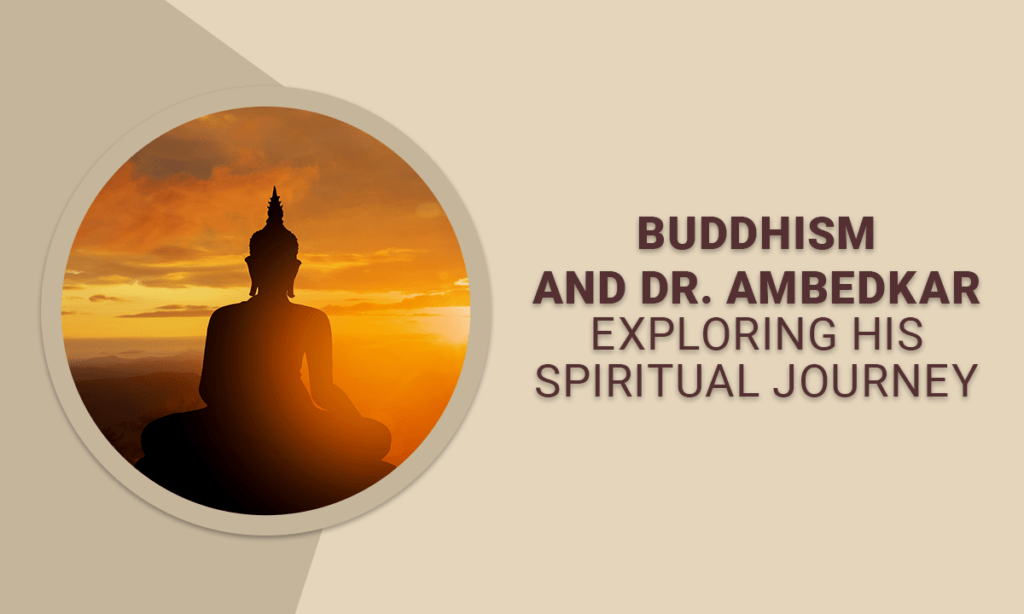Introduction
Dr. Bhimrao Ramji Ambedkar, widely known as Babasaheb Ambedkar, was a prominent Indian jurist, social reformer, and the chief architect of the Indian Constitution. His life and work are often celebrated for his tireless efforts to eradicate social discrimination and uplift the marginalised sections of Indian society, particularly the Dalits (formerly known as Untouchables). A lesser-known aspect of his life is his profound connection to Buddhism.
This post explores Dr. Ambedkar’s spiritual journey and his pivotal role in reviving Buddhism among India’s oppressed communities.
Understanding Buddhism
Dr. Ambedkar studied various religions and philosophies during his academic journey, including Buddhism. The teachings of the Buddha, Siddhartha Gautama, deeply influenced him. Buddhism’s emphasis on equality, non-violence, and the rejection of caste distinctions resonated deeply with Dr. Ambedkar’s own convictions.
Conversion to Buddhism
Dr. Ambedkar’s spiritual journey took a significant turn in 1935 when he declared his intent to convert to Buddhism. He saw Buddhism as a path to emancipate the marginalised sections of Indian society from the chains of caste-based discrimination. Dr. Ambedkar believed that Buddhism’s egalitarian principles aligned with his vision for a just and equal society.
On October 14, 1956, in a historic event, Dr. B.R. Ambedkar, along with over 380,000 of his followers, embraced Buddhism during a ceremony in Nagpur, Maharashtra. This mass conversion event, known as “Dhamma Diksha” or “Dhamma Chakra Pravartan,” marked a significant moment in the history of Buddhism and social reform in India.
The Impact of Dr. Ambedkar’s Conversion
Dr. Ambedkar’s conversion to Buddhism had profound implications for India’s social and religious landscape:
Dalit Empowerment: Dr. Ambedkar’s conversion inspired countless Dalits to follow in his footsteps. By adopting Buddhism, they shed the oppressive caste labels and stigmas associated with Hinduism. This movement provided a sense of dignity and pride to those who had long been marginalised.
Buddhist Revival: Dr. Ambedkar’s embrace of Buddhism sparked a revival of the religion in India. It breathed new life into a tradition that had largely waned after centuries of decline. His efforts to reintroduce Buddhism to the masses included translating Buddhist scriptures into Marathi, making them accessible to a broader audience.
Constitutional Protections: As the chief architect of the Indian Constitution, Dr. Ambedkar ensured that it enshrined protections for religious and social freedoms. He also played a crucial role in including provisions for affirmative action, reservations, and safeguards for the welfare of Scheduled Castes (the official term for Dalits) within the Constitution.
Legacy and Inspiration: Dr. Babasaheb Ambedkar’s legacy as a social reformer and his contribution to Buddhism continue to inspire generations of Indians. His statues, memorials, and institutions dedicated to his work are widespread across India.
To Conclude…
Dr. B.R. Ambedkar’s spiritual journey and conversion to Buddhism were pivotal moments in his lifelong struggle for social justice and equality. His vision, combined with his deep commitment to Buddhism, played a vital role in reshaping the destiny of India’s oppressed communities. Today, his legacy stands as a beacon of hope and inspiration for millions who continue to fight against discrimination and seek a more just and equal society. Through his teachings and actions, Dr. Ambedkar’s influence on India’s social and spiritual landscape remains enduring and profound.
People Also Read: The Role of Dr. Ambedkar in Social Reforms and Ending Caste Discrimination

Pingback: The Stigma Surrounding Substance Abuse: Challenging Myths and Misconceptions - Sankalp Bhoomi Trust